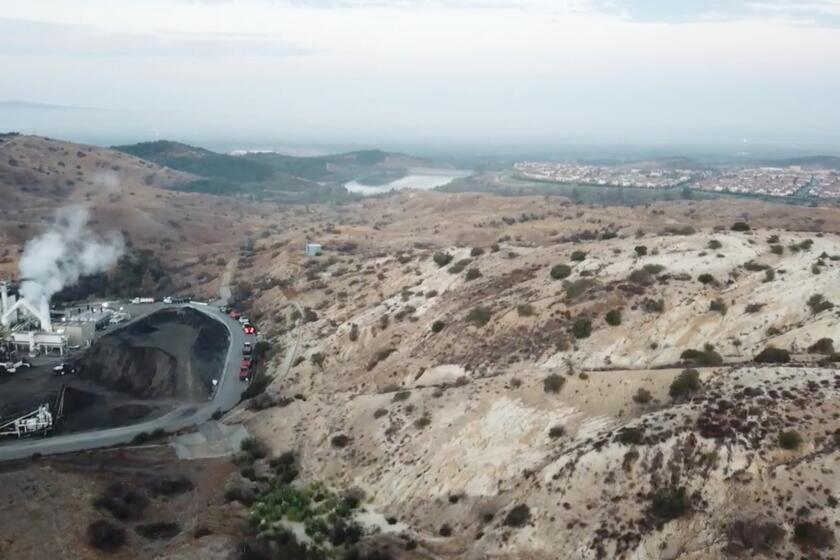With critical infrastructure at risk due to sea level rising, San Clemente approves coastal resiliency plan

With rising sea levels potentially wreaking havoc on California coastlines in the decades ahead, San Clemente officials this week approved a Coastal Resiliency Plan to address shoreline erosion, coastal flooding and other consequences of potential rising sea levels.
The plan is part of the city’s Local Coastal Program, which is partly funded by the California Coastal Commission and is required for all California coastal cities and counties. It is meant as a planning document to guide the city toward fortifying itself against a potential rise in sea levels expected as the effects of climate change worsen.
The City Council unanimously approved the plan on Tuesday night following very little discussion. The approval comes after a six-week period when the public was able to submit comments to the city.
San Clemente’s Coastal Resiliency Plan is based upon the findings of the city’s Sea Level Rise Vulnerability Assessment, which was completed in 2019 to identify facilities and infrastructure that could be at risk due to rising sea levels.
A city report describing the coastal plan from Cecilia Gallardo-Daly, community development director, says that San Clemente is affected by several coastal hazards.
“Beach/shoreline erosion is an existing challenge faced by the city, and the region, and is anticipated to accelerate with [sea level rise],” the report says. “In San Clemente, shoreline erosion is expected to continue to be the primary hazard affecting coastal resources, existing structures and critical infrastructure.”
Following years of pressure from residents, Irvine approved new measures this week to regulate trucks leaving All American Asphalt and mandate disclosure of the plant to prospective residents looking to buy houses in the area.
The damaging impact of sea level rise became all too real to the city in September when train tracks that carry Metrolink commuters and Amtrak travelers along the coast had to be temporarily shut down because large waves caused the ground to become unstable. Gallardo-Daly’s report says that the intertidal zone near the tracks are at risk of being permanently lost due to sea level rise. Expensive beachfront communities are also at risk, with several multimillion-dollar homes and a clubhouse showing damage in the Cyprus Shores gated neighborhood around the time the tracks had to be closed down.
A project to replace sand on the city beach to protect the railway is in line to potentially receive about $9.3 million in funding early next year. The San Clemente Shoreline Project would also protect roads, buildings and other infrastructure. The funds are included in the 2022 Congressional budget.
The city’s vulnerability assessment provided predictions on how the San Clemente coast would be impacted if the sea level rises to certain thresholds.
Without adequate intervention, the various structures on the city’s beaches could become vulnerable to flooding and erosion at just .8 feet of sea level rise, including the pier and marine safety building, the report says. At 3.3 feet, most sandy beaches will be eroded up to the railroad tracks, and at 4.9 feet, erosion could reach the coastal bluffs past the railroad tracks.
The erosion could also take a generous hit at the city’s coffers, as San Clemente beaches host more than 3 million visitors a year and generate about $87 million in annual spending, according to a 2013 study from the county, California State Parks and U.S. Army Corps of Engineers.
Gallardo-Daly’s report says that the city’s resiliency plan will largely be based on monitoring the beach, shoreline and tides to identify indications that the shoreline is approaching the damaging thresholds. Then, the city will respond with mitigation efforts.
Some of the major recommendations in the plan include preparing a feasibility study to find critical erosion hot spots and start one or more pilot projects to help mitigate the erosion, such as creating a living shoreline, which involves strategically using natural materials to protect coastlines from erosion.
Other proposals in the plan include the creation of a Capital Improvement Program fund to allocate money toward coastal resiliency projects, reestablishing an ongoing annual shoreline monitoring program and creating a regional shoreline management group to “collaborate, cost-share and implement regional coastal resiliency solutions.”
All the latest on Orange County from Orange County.
Get our free TimesOC newsletter.
You may occasionally receive promotional content from the Daily Pilot.





